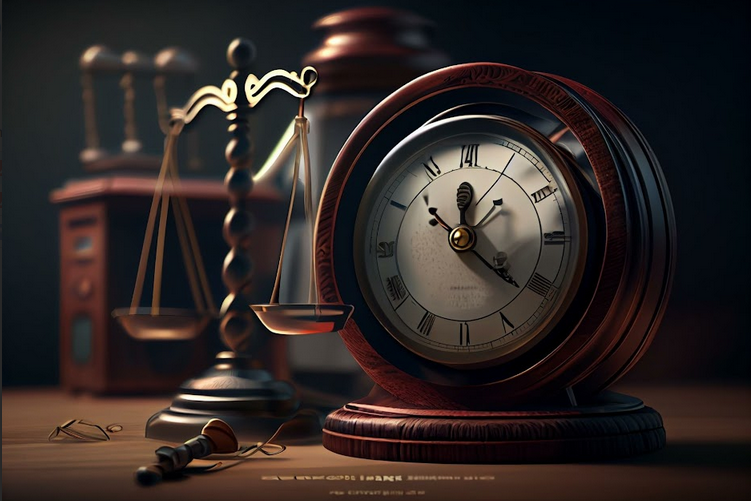Losing a loved one in a tragic event changes your life profoundly and suddenly. One moment, everything feels familiar; the next, everything shifts.
So what defines a fatal personal injury for you, and why should you dive into the intricate world of legal proceedings? When someone’s negligence, recklessness, or intent leads to a fatal personal injury, it leaves a profound impact on your life.
The idea of facing the legal system may intimidate you during such a painful time. However, this guide exists to light your way, from the heartbreaking incident to achieving justice in the courtroom.
By arming yourself with knowledge, you stand strong, ready to fight for the justice your loved one deserves. Let’s walk this path together, breaking down every step to ensure you make informed decisions.
Knowing The Statute Of Limitations
Understanding your time frame for action is essential. Each jurisdiction has a statute of limitations, which dictates how long you must file a claim after the incident. This time frame often ranges from one to three years from the date of death. With a statute of limitations, the court will typically dismiss your case, no matter how valid, if you miss the deadline.
While the standard stature provides a general time frame, exemptions can arise based on specific circumstances. For instance, if the cause of death is discovered later—like in cases of long-term exposure to harmful substances—the clock might start from the discovery date rather than the actual date of death. Another example might involve cases where the liable party leaves the state after the incident but before initiating the lawsuit.
Time is of paramount importance in fatal personal injury cases. Acting swiftly and with informed guidance ensures you don’t miss out on the chance to seek the justice your loved one deserves.
Drafting The Complaint (1 Month)
Also known as wrongful death in many jurisdictions, the timeline begins with drafting a formal complaint. This legal document details the allegations against the defendant and the relief you seek. This isn’t just a statement of facts but a coherent presentation highlighting the other party’s negligence.
The complaint can include the nature of the fatal personal injury—such as a traumatic brain injury from a work accident, from a car crash, or due to medical negligence. Wrongful death can also be due to a crime, a defective product, or a slip-and-fall accident on someone else’s property.
The complaint document also includes the types of compensation you desire from the other party, such as funeral costs, medical expenses, and loss of income. Family members may also claim for loss of companionship and damages for pain and suffering for such a tragic event.
The time required to draft a complaint for a fatal personal injury case can vary depending on the following:
- Case Complexity
Fatal personal injury cases often involve severe circumstances. Sometimes, cases involving specific causes require specialized expertise. For example, for a traumatic brain injury, hiring a brain injury lawyer becomes invaluable. Drafting the complaint can take longer if the case involves multiple defendants, varying accounts of the incident, or intertwined legal issues.
- Availability Of Information
It can be challenging to gather information after a tragic incident. You’ll need to collect autopsy reports, witness statements, and details surrounding the incident. Having these pieces of information at hand can expedite the drafting process. Conversely, you can experience delays if some of these documents are unavailable.
- Lawyer’s Workload And Resources
An attorney with experience in fatal injury cases will likely have the expertise and resources to draft the complaint properly. However, they may charge higher fees than a less experienced lawyer.
- Review And Revisions
It’s vital to portray the gravity of the incident accurately. This often involves multiple revisions, consultations with other family members, and possibly expert opinions, which could lengthen the drafting time.
- Specific Jurisdictional Requirements
Each jurisdiction may have its unique requirements for drafting fatal injury complaints. Lawyers can help accelerate the process, whereas specialized requirements can increase the drafting duration.
Generally, for a typical fatal personal injury case, once the attorney possesses all the necessary information, drafting a complaint might range from a couple of weeks to a month.
However, more complex cases could extend this time frame. Regular communication with your attorney, especially one specialized like a brain injury lawyer, will give you a clearer picture of the expected timeline tailored to your case’s specifics.

Serving Notice To Defendant And Waiting For A Response (3 weeks to 2 months)
After you and your lawyer launch a fatal personal injury complaint, a process server or law enforcement officer delivers a copy of the complaint notice and summons to the defendant, who is mandated to respond.
While procedural rules and their specifics vary by jurisdiction, the time it takes to serve the notice and for the defendant to respond can range from weeks to several months, depending on the service of the process, the time frame to file a response, request for an extension, and delaying factors.
It could take longer if the defendant evades communication or is challenging to locate. Delivering the notice can take the sheriff, a process server, or certified mail a few days or weeks.
After receiving the notice, the defendant needs to file a response, called an ‘answer,’ within a specific time frame, usually 20 to 30 days from the date of service. However, this can vary depending on local rules and the nature of the case.
In some cases, the defendant might request an extension, especially for a complex case or if they need more time to obtain legal representation. Courts can grant their requests and extend the waiting period.
Once the defendant files an answer, they can admit the claims, deny them, or assert defenses. Alternatively, they may also challenge the validity of the complaint or the court’s jurisdiction. They can also file a motion to dismiss, adding more time as the court evaluates such motions.
While the general process might seem straightforward, various factors can influence the timeline, from the defendant’s receipt of the notice to your receipt of the defendant’s response. On average, you can expect anywhere from three weeks to two months, depending on the circumstances.
Discovery Phase (6 months to 2 years)
During the discovery phase, both parties exchange pertinent information related to the case. This process helps both sides understand the strengths and weaknesses of their position, which can influence decisions about settling or going to trial.
This phase includes answering questions under oath about specific points of the case, requests for particular documents or any other evidence, witness interviews, and requests for admissions to either admit or deny specific facts.
The discovery phase typically lasts between six months to a year. This gives ample time for both sides to gather and exchange information. However, extension requests and approvals can lengthen the duration. This applies to complex cases with multiple defendants, expert witnesses, or extensive evidence.
At times, the other party may also employ delaying tactics to pressure the other side into settling or buy more time for preparation.
While potentially lengthy, the discovery phase is crucial in a fatal personal injury case. This ensures you have all pertinent information and lets both parties make informed decisions about the case.
Mediation Or Settlement Negotiations (1 to 2 years)
The purpose of this phase is to reach an agreement without the need for a prolonged court trial. Both parties aim to find a common ground, saving time, costs, and emotional stress.
During mediation, a neutral third party facilitates the discussion between the plaintiff and the defendant. The mediator seeks to help the parties understand each other’s perspectives and agree on a mutually beneficial solution.
Apart from mediation, attorneys from both sides can also engage in direct negotiations, discussing the strengths and weaknesses of their cases and exploring potential settlement amounts.
The duration of the mediation and settlement negotiation phase largely depends on the willingness of the parties to settle. If both parties are determined not to go to trial, this phase can conclude within weeks. However, the negotiation process can take several months for complex cases involving significant damage or intricate legal issues.
The mediator’s approach and style can also influence the duration. Some might prefer intensive day-long sessions, while others might favor shorter and more frequent meetings. Sometimes, families may also need more time to decide whether to accept the settlement or proceed to the next step to ensure justice for their loved ones.
The mediation and settlement phase is a delicate balance of legal strategy, emotional considerations, and financial implications. While it offers the opportunity to resolve the case without the uncertainty of a trial, its duration can be unpredictable.
Trial (1 to 2 years)
While mediation and settlement negotiations aim to find a resolution without the stress of court proceedings, there are instances where finding common ground remains necessary. When parties disagree, the case advances to its most decisive phase: the trial. In this stage, both sides present their arguments in a courtroom and entrust the legal system to deliver a fair judgment.
Three factors influence the length of the trial phase: case complexity, court schedule, and jury deliberation. A case with straightforward facts and a handful of witnesses might conclude in a week or two. However, more complex issues with multiple witnesses, expert testimonies, and vast evidence can extend for several weeks or even months.
Courtroom availability and the schedules of the judge and attorneys can also affect the length of the trial. Delays can occur if other cases are running long or there are conflicts in scheduling hearings.
Jury deliberation can also affect this phase of the fatal personal injury timeline. Some juries may be able to reach a verdict quickly. At the same time, emotionally charged cases may take days or even weeks for a decision.
Beyond The Courtroom: Collecting Compensation
Generally, payment will be forthcoming immediately or within a reasonable time frame after the judgment. However, you might encounter delays due to the losing party’s financial status and their appeals to delay payment. The defendant’s insurance party may also have additional procedures to lengthen the collection timeline. In addition, courts may also have specific rules, policies, and schedules relating to compensation claims.
Given these factors, collecting damages can take a few weeks to several years after winning a fatal personal injury case. Working closely with an attorney can help you navigate potential obstacles and expedite payment on your behalf.
Final Thoughts
In sum, the timeline of a wrongful death claim starts with filing a complaint and ends with a fair settlement through negotiation or a court decision. However, this seemingly straightforward process can take time and even feature challenges and delays. Knowing how long the process takes allows families to prepare for what lies ahead as they claim justice for the untimely passing of a loved one.
Related Posts












